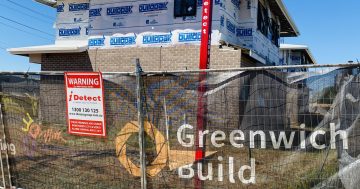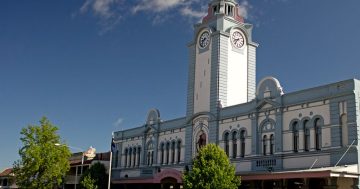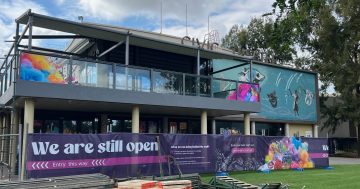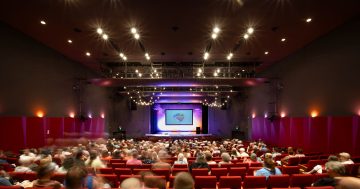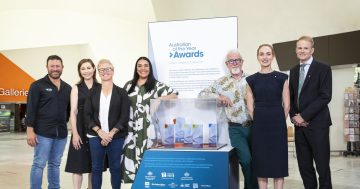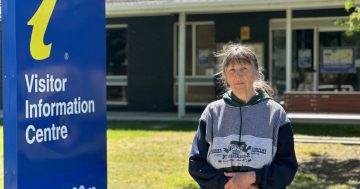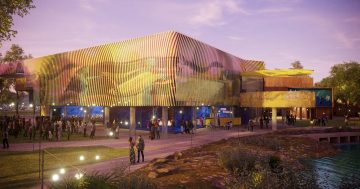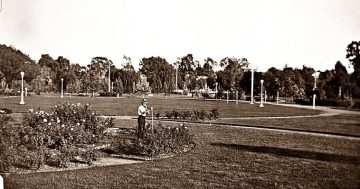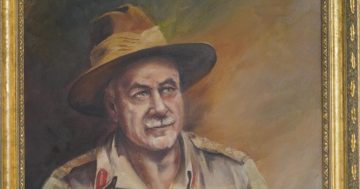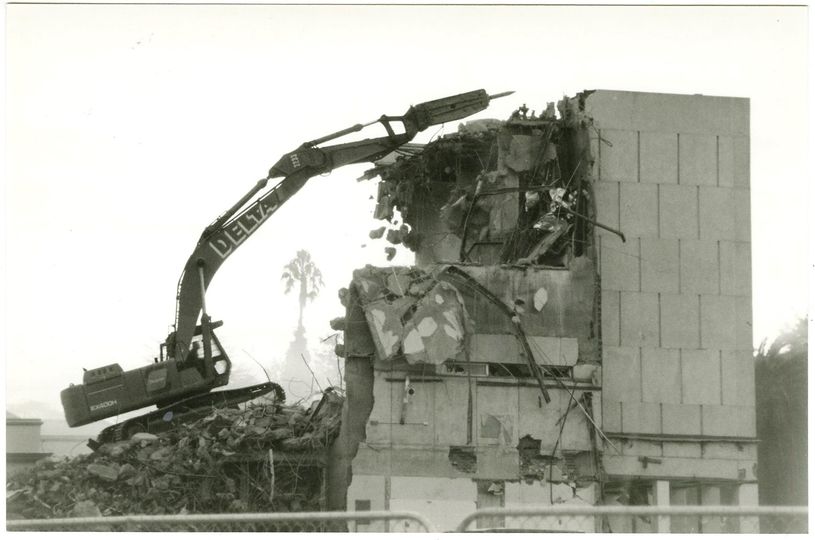
Wagga’s old Civic Administration Centre was demolished in 1997. Photo: Museum of the Riverina.
This week the Museum of the Riverina takes you back to the final moments of Wagga’s old Civic Administration Centre.
Wagga’s original council chambers (now the Historic Council Chambers) were built as the Wagga Wagga Borough Town Hall in 1881.
Designed by Melbourne architect William Salway, the building was constructed by local firm Charles Hardy for £2453 (almost half a million dollars today).
In 1949, three years after Wagga was proclaimed a city, a special report was presented to the Town Hall Committee of the Council, recommending that the existing council chambers be demolished to make way for a town hall worthy of the growing city.
The site was seen as ideal. With frontage to Baylis and Morrow streets, facing the Victory Memorial Gardens and flanked by the Wollundry Lagoon and Rose Gardens, it was believed that the construction of a town hall would make it one of the finest anywhere in Australia.
Luckily for today’s city, the destruction of Salway’s High Victorian creation was never given the go-ahead!
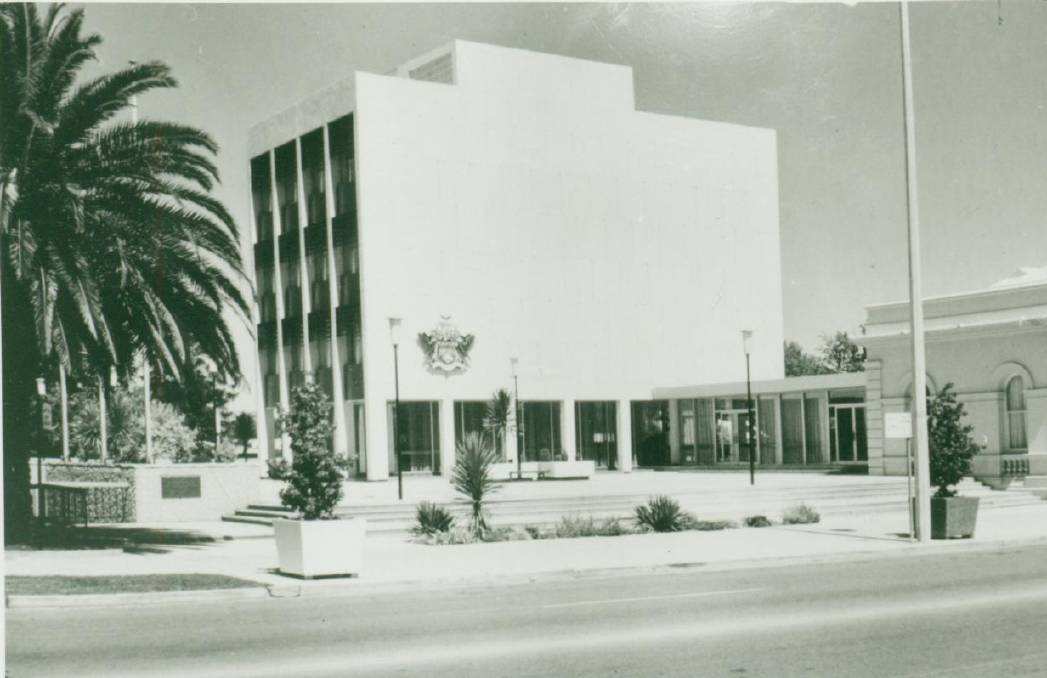
Wagga’s six-storey Civic Administration Centre was constructed in 1967 adjoining the historic council chambers. Photo: Sherry Morris.
The Wagga Wagga Civic Theatre was opened on 29 June, 1963, on the lagoon not far from the original council chambers building.
At a Wagga City Council meeting in October 1965, approval was given to build a new council administration block that would adjoin the existing council chambers.
A six-storey modern building, it was constructed and opened in 1967 to provide additional office space for council staff.
The library filled the ground floor, but the premises never really proved adequate.
It was air-conditioned, a novelty that was enjoyed greatly by many locals, especially on a scorching summer’s day.
As was customary at the time, when the building was completed, the builders put a tree on the top storey.
Sadly, by 1994, council staff had outgrown the old building, and in September of that year, it was decided to build a new civic centre on the same site.
Demolition of the old building began in May 1997.
The council’s new (and current) administration hub – which incorporates the City Library (once again filling the ground floors), council chambers, administrative offices and meeting rooms, and the Wagga Wagga Art Gallery – was constructed.
It was officially opened by the then Governor-General Sir William Deane in February 1999.







